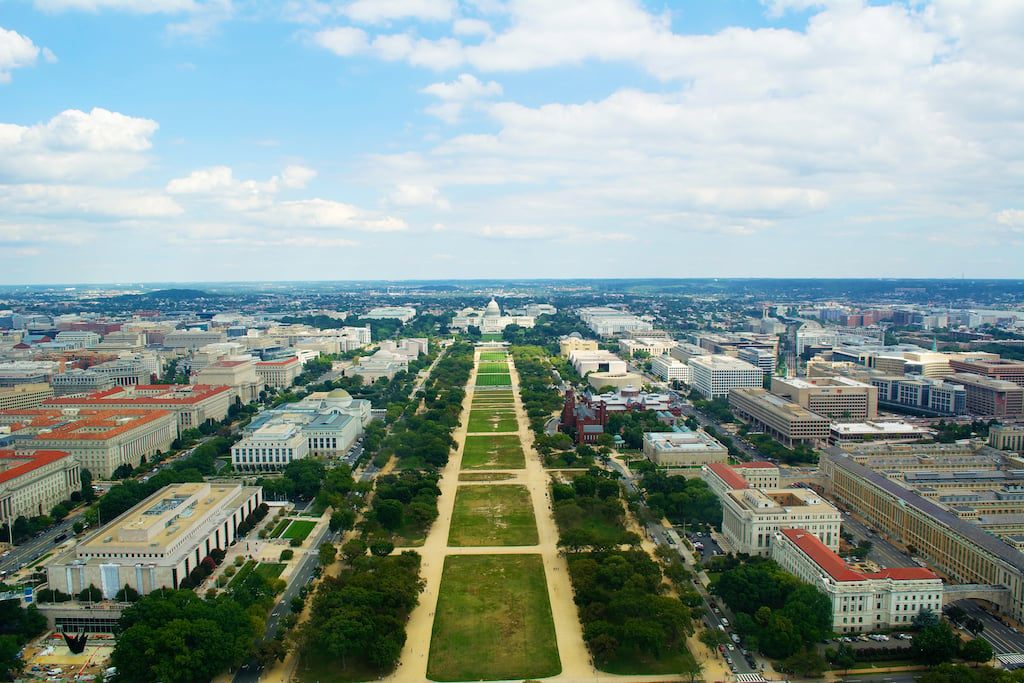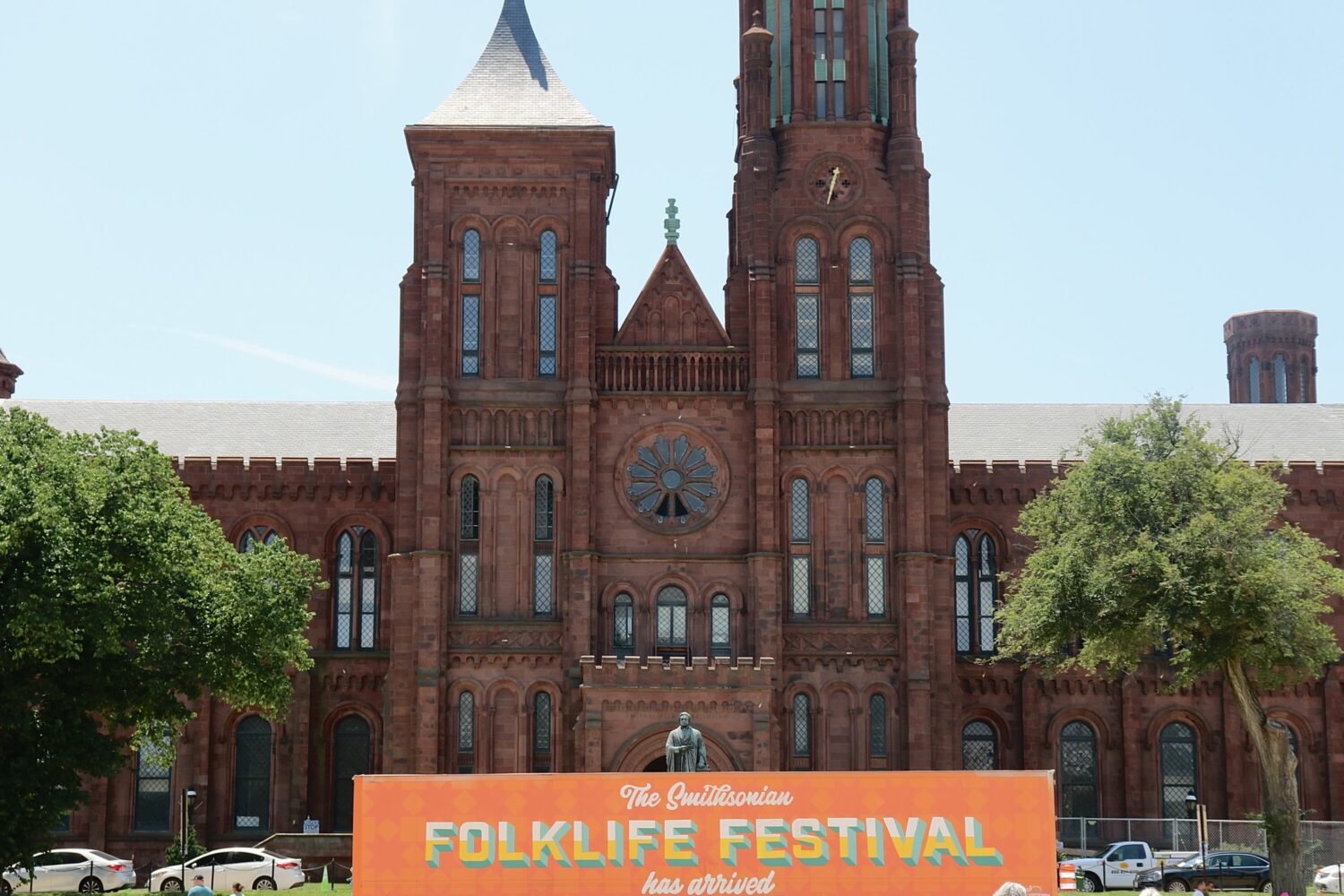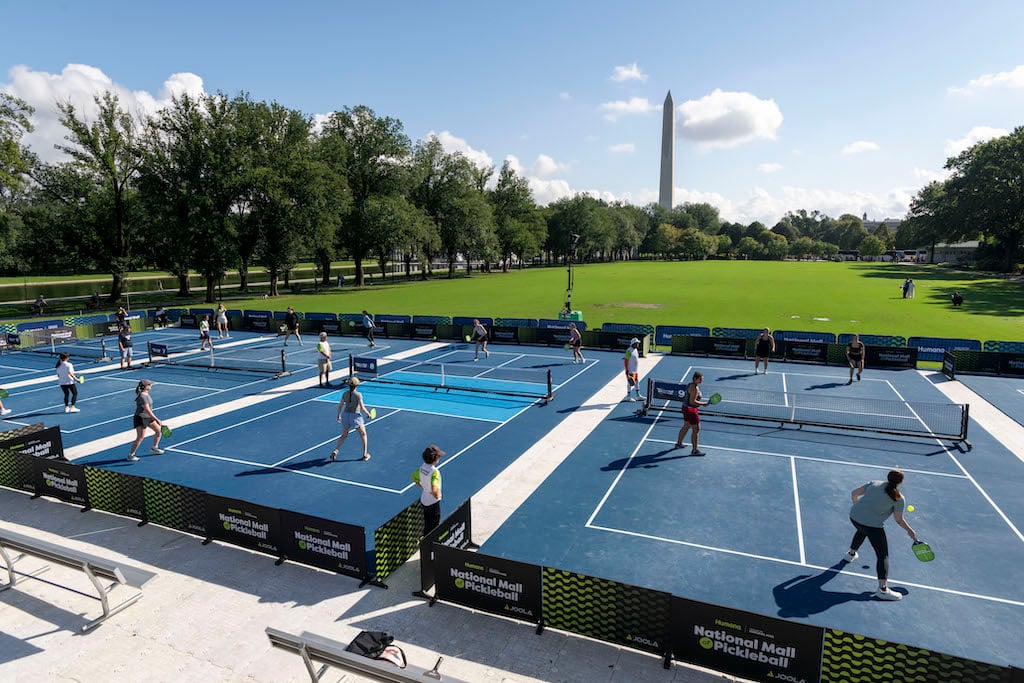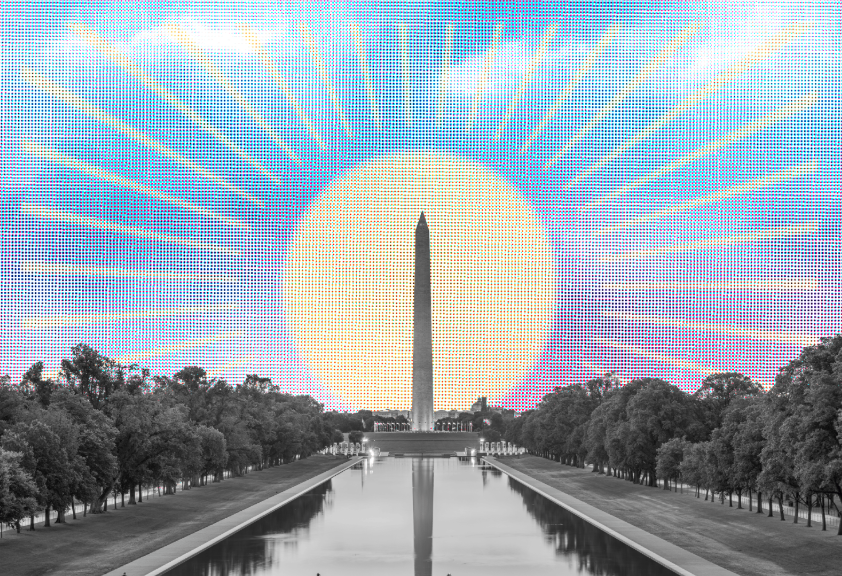A Virginia-based nonprofit has cleared the latest hurdle in its effort to build a first-of-its-kind memorial honoring journalists who’ve lost their lives while covering the news. The Fallen Journalists Memorial Foundation received Congressional authorization in 2020 to construct the memorial—using private funds—on federal land. Now, it has the go-ahead from the U.S. Commission of Fine Arts to begin work on its design.
Organizers hope to complete the memorial—which is slated to be located on the National Mall, between the U.S. Botanic Garden and the National Museum of the American Indian—by the end of 2028. Washingtonian spoke with Barbara Cochran, the president of the Fallen Journalists Memorial Foundation, who previously held senior roles at National Public Radio, NBC’s Meet the Press, and CBS News. The conversation is edited for space and clarity.
Disclosure: Washingtonian’s president and CEO, Catherine Merrill, is a member of the Fallen Journalists Memorial Foundation’s board of advisors.
So this effort got underway in the wake of the shooting at the Capital Gazette in Annapolis?
That was really the inspiration for it. Our chairman, [former Republican Congressman from California] David Dreier, had retired from Congress in 2012. He was, among other things, serving on the board of directors of Tribune Publishing, which, at that time, owned the Capital Gazette. So when the terrible tragedy occurred, with five people being killed in the newsroom, he was very concerned.
In the spring of 2019, [Dreier] attended the Gridiron dinner, and the president of the Gridiron Club talked about increasing threats to journalists. And we’ve been seeing the number of journalists’ deaths go up, and [we’ve seen] threats and abuse had increased exponentially in the last few years. And [the Gridiron Club president] talked about Jamal Khashoggi, who had been killed in the Saudi consulate in Turkey. And also, about his own colleague from the Wall Street Journal, Daniel Pearl, who was killed in Pakistan. But he did not mention the Capitol Gazette, even though it had taken place so close to Washington and was actually the most deadly single attack on American journalists on American soil, in our history.
David [Dreier] spoke to him afterward and, of course, he says, ‘Oh, gosh, I’m so sorry. Of course, I should have mentioned that.’ But [Dreier] also became concerned that [the Capitol Gazette tragedy] was going to be forgotten.
How did the idea for this memorial develop from there?
So [Dreier] talked to a couple of journalists, Don Graham being one of them. And then he approached the Annenberg Foundation, which has supported many, many journalism projects over the years. And of course, the Foundation was created by Walter Annenberg who was a major media owner. And [Dreier] asked them for seed money to get started to explore this. His idea was that what we needed was a public memorial on federal land—that this was a memorial that needed to take its place alongside all the other memorials here in Washington.
He received that funding to get started, and he began talking with some friends in the house and in the Senate. And by June 28, 2019, which was the anniversary of the attack on the Capitol Gazette newsroom, we were able to announce that legislation had been introduced with bipartisan sponsorship in both the Senate and the House. Eventually, it got through unanimously by both the House and the Senate, in December of 2020, and it was signed into law by President Trump.
Did the political process get tricky at any point on Capitol Hill, or did it all move pretty smoothly?
No, no, the support was bipartisan. And almost everyone we talked to said, ‘Oh, of course, yes, there should be something like this.’ They all recognize that nowhere on federal land was their recognition of the First Amendment or the role of the press in a democracy.
Where do things stand with the approval process? You have recently gotten approval from the U.S. Commission on Fine Arts. What’s next?
There’s a law called the Commemorative Works Act, and it specifies 24 steps that you need to go through before you are able to cut the ribbon and open the memorial to the public. And the approval of the site is step number 12. There’s a total of about 22 agencies who will weigh in before this is all done.
What do you want visitors to get out of this memorial?
We say that we have three purposes. The first is to commemorate those who lost their lives. So we want visitors—if they knew someone—to find a place of contemplation and solace. If the visitors don’t know anyone in particular, we want them to come away with an appreciation of those stories [of the fallen journalists]. A lot of that storytelling may need to take place online, but we want people to go away with a sense of the cost—that there is a cost to press freedom, and there is a cost to witnessing and recording and telling stories. That there are people who are willing to pay that cost is something to be appreciated.
The second goal is to educate. And that flows from the first goal of commemorating. We want people to learn these stories, we want them not to be forgotten, but also to develop a sense of why a free press is a pillar of democracy, as President Biden said the other night at the White House Correspondents Dinner. And finally, we want to inspire. So you can think of all the visitors who come to Washington, and of course, the visitors who come to Washington from all over the world. [We hope they leave the memorial] thinking about why democracy is important, and that they’ll be inspired to go home and fight for an independent and free press.
Why is it important for fallen journalists to be commemorated in the same way we commemorate fallen soldiers or others on the National Mall?
Don Graham, who’s been one of our strongest supporters, speaks about this very eloquently. He was in the military during the Vietnam War. He worked in the Public Affairs Section in Vietnam. And he knew three journalists who were killed there. He knew how brave they were, he knew what they did to tell the stories of the people who were fighting the war and to be first-hand witnesses to what was happening there. And yet, at the Vietnam War Memorial, their names are not inscribed there, even though they were facing many of the same dangers and taking many of the same risks. So, for him, it’s a very personal thing. And I think that’s true for all of us. All of us knew individuals who took risks in order to witness and document and tell the stories that the public needed to know about.


![Luke 008[2]-1 - Washingtonian](https://www.washingtonian.com/wp-content/uploads/2017/10/Luke-0082-1-e1509126354184.jpg)














